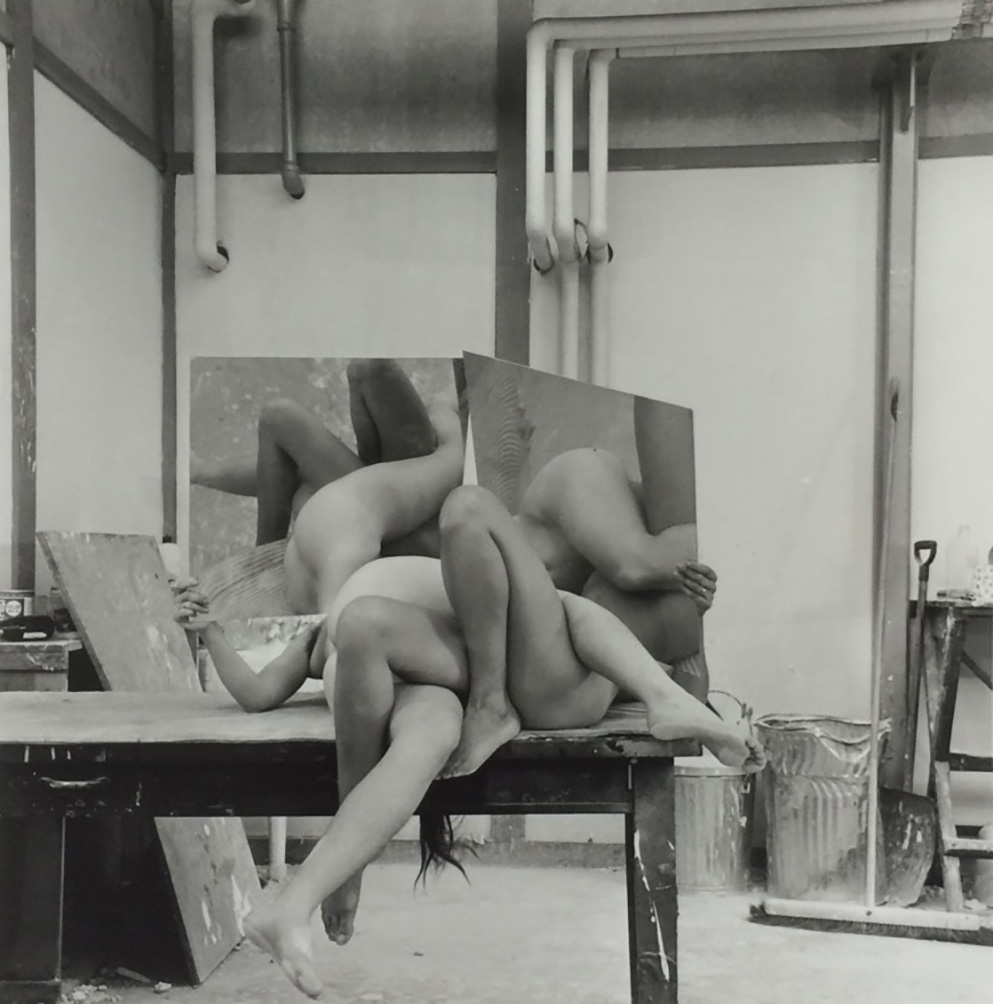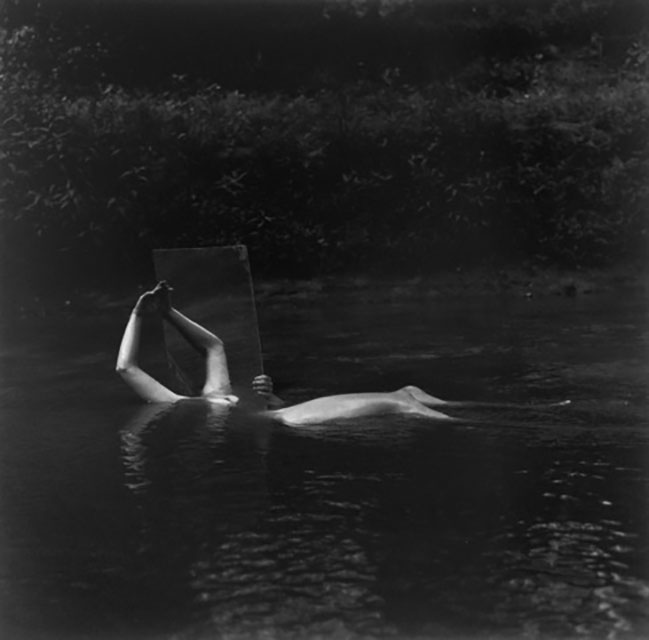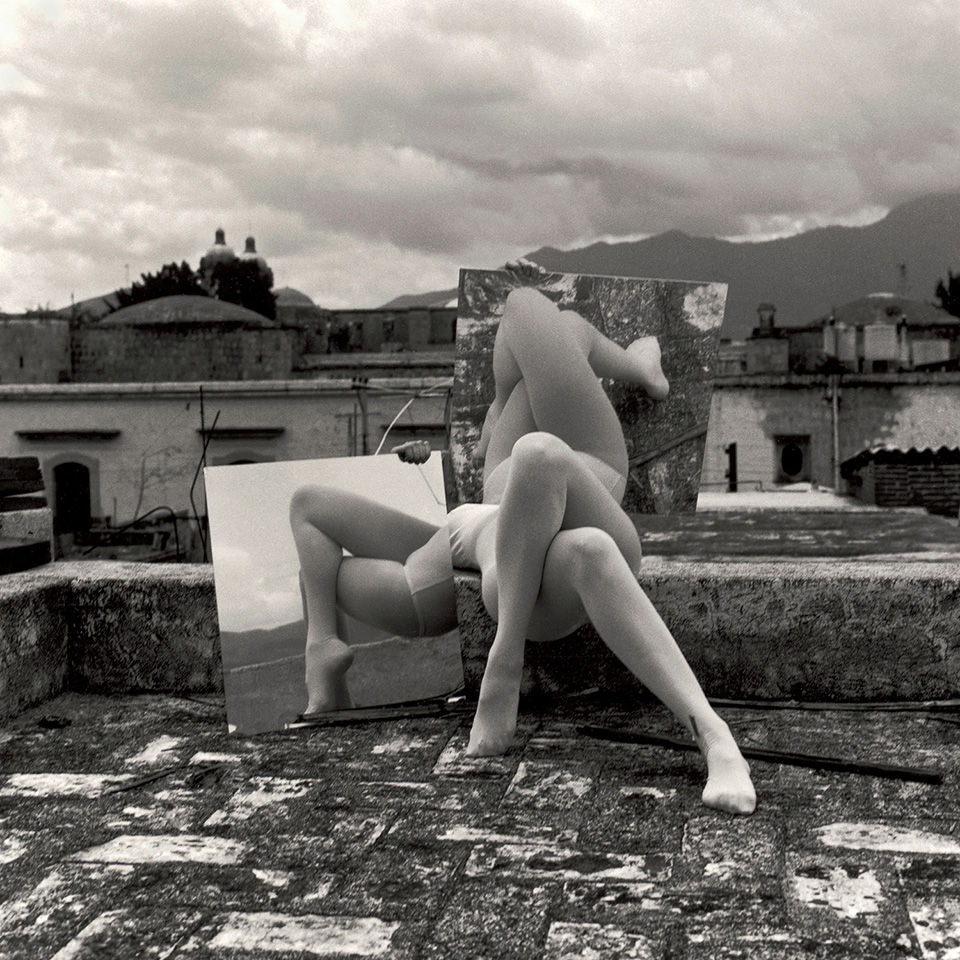PHOTOGRAPHY
The basic elements of Hans Breder’s new work appear quite simple: the nude human body, and a reflecting surface, a mirror.
The mirror is the most expedient means for obtaining an overall impression of our own physical presence, but more than that, its affinities to the worlds of water and crystal, as well as its nature of ‘instant portrait’ seem to be magical properties (and it has always been an important ‘prop’ in the practice of magic).
Art and literature, from anonymous Chinese folktales to Jorge Louis Borges have recognized the mirror as a window or door leading to ‘other’ places, worlds of reversals, counterpart, doppelgänger, and symbolically (e.g. Jean Cocteau) as possible entranceway to totally separate and rarely knowable realms; from Narkissos to Dorian Gray to the Surrealists, the roll call could be continued.
And yet, what we have here is clearly and plainly a sheet of polished metal, 2 ft. x 2 ft. square: no mirror on the wall, no enchanted pool, etc.–but ‘mirror’ returned to its most innate and proper function, that of reflecting: reflecting the human body, dividing, dissecting and multiplying it, thereby creating often astonishing and (through the skill of the artist who in this case is sculptor, choreographer and visual recorder of form and event all in one) always beautiful mandalas of body, its shapes and surfaces.
The longer I have been looking at these works, the more apparent is has become to me that there really is no distortion in them: after the initial surprise at seeing the body so variously transformed–and evocatively as well: many of the images remind one of Hindu deities, others may appear like mutations out of some dreamed past or future–the naturalness, I am tempted to say, the sheer musicality of them begins to impress and delight.
They exist on levels of what may be the only true ‘magic’, one that does not deal in mystification or derangement, but obeys laws as simple and as complex (and therefore, vastly variable) as do music and mathematics. Yet again, the object of their attention is the closest, warmest, earthiest thing we know, the human body.
Many years ago the American poet Ezra Pound reminded his fellow-practitioners that poetry tends to wither and die whenever it gets too far removed from the “condition of song”. Going back to the human form, Hans Breder the sculptor has likewise discovered that the potential of that form is far from ‘exhausted’–that it is, as far as we can tell, inexhaustible. As in song, words, music, the most obvious may turn out to be the least guessed-at possibility–as also, the greatest mysteries are contained in our literally most immediate surroundings, our skin.
-Anselm Hollo, Exhibition catalogue Richard Feigen Gallery. 12/16/1971
See more the Danziger Gallery

Iowa City Studio, IA, 1972 |

Old Man’s Creek, IA, 1971 |

Oaxaca, Mexico, 1973 |
|
Studio Photographs in the Studio portion of the series were taken between 1969 and 1972 in studio locations in Iowa City, IA. See more at the Danziger Gallery |
Old Man’s Creek Photographs in this portion of the Body Sculptures series were taken at the location of Old Man’s Creek, near Iowa City, IA, in 1971. See more at the Danziger Gallery |
Mexico Photographs in this portion of the Body Sculptures series were taken at various locations in Mexico, 1973. See more at the |